Yesterday morning, a mongoose snuck into the coop and tried to steal my chicken’s eggs. Fortunately, the cockerel crowed loudly enough to alert us to the danger, and we were able to chase the offender off.
Although mongooses may steal my chicken eggs from time to time, I’m still fascinated by them. They’re fast and athletic and have gained a fearsome reputation for standing their ground against venomous snakes.
They were also running around on Earth long before the first human evolved and stand a good chance of still being here long after we’ve departed.
What makes the mongoose so adept at survival, and what can we learn from them?
The Natural History of the Mongoose
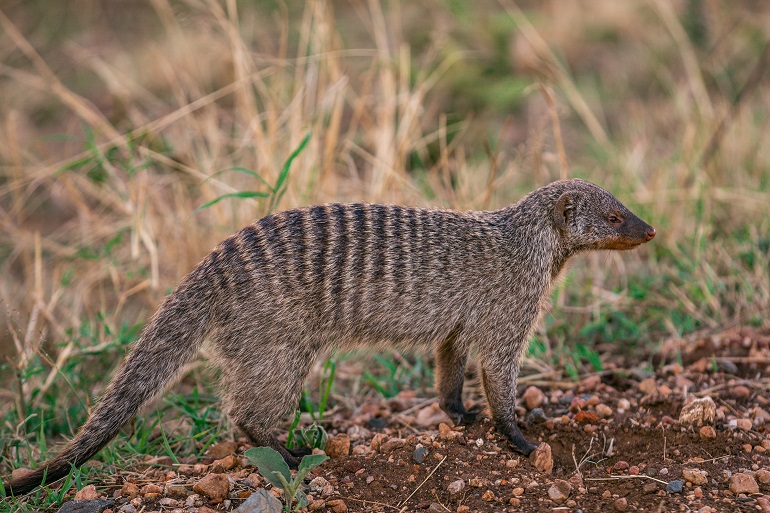
Mongooses first appeared somewhere between 21.8 and 3.6 million years ago, and there are now over 30 different species, most of which live in Africa.
All mongooses descended from cat-like mammals known as the Viverraines, but they have diversified over the years, forming three distinct sub-groups.
Most species are primarily solitary, but a handful have developed complex social hierarchies in which numerous families join together to form an extended mob. Their patterns of behavior and hunting are widely varied, making them a diverse and largely underestimated group of mammals.
What Is a Mongoose, Scientifically Speaking?
All species of mongoose belong to the family Herpestidae of the kingdom Animalia, a taxonomic family within the Carnivora order.
Within that family, several different sub-groups distinguish the Madagascan mongooses from those belonging to the Mungotinae and Herpestinae subgroups.
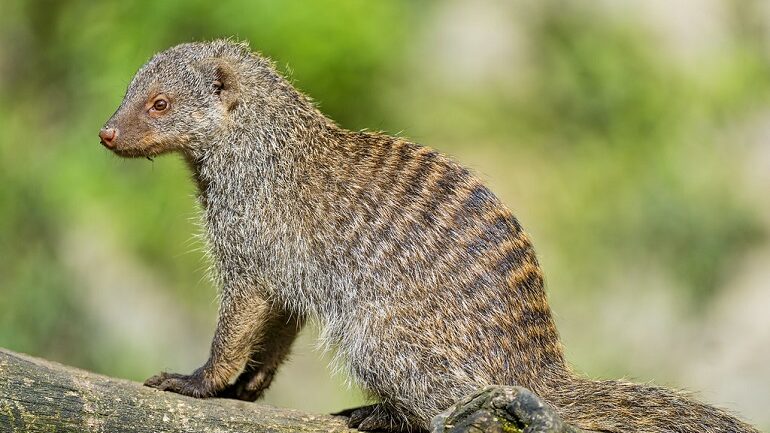
Members of all three families share the same physical characteristics. Still, those in the Mungotinae family tend to be more social in their behavior than the solitary members of the Herpestinae group. Some other classified genera include; Genus Herpestes, Genus Suricata, and Genus Paracynictis.
All species are mostly called mongooses, but there is a group within the same family known as Meerkats. Meerkats belong to the genus Suricata and are closely related to the mongoose.
Of all the sub-groups, the family Eupleridae is the most contentious. This sub-group contains only species native to Madagascar. There are just eight species in the Eupleridae family, all of which have more in common with cats than other mongooses.
What Does a Mongoose Look Like?
Mongooses are small mammals ranging between 7 inches and 2 feet in length. The common dwarf mongoose is the smallest of all the mongooses, averaging around 7 inches long, while the white-tailed mongoose is the largest, reaching around 28 inches long in body length alone. The tail adds a further 18.5 inches.
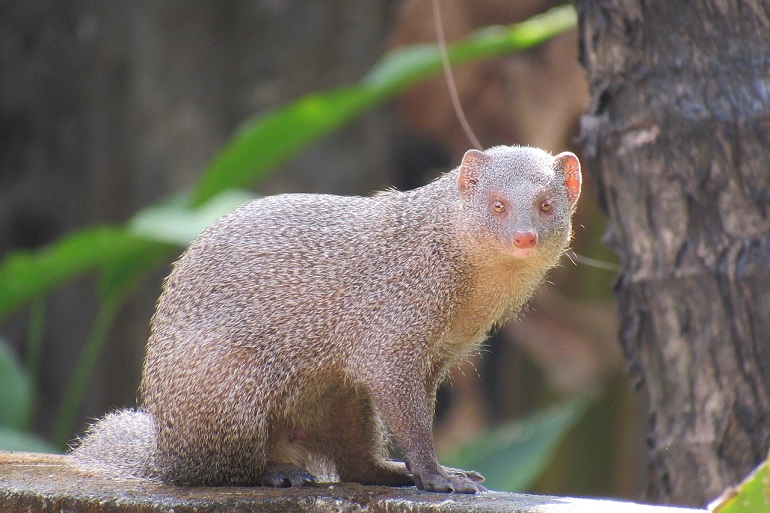
They have long, tapered snouts, rounded ears, and small eyes with horizontal pupils that increase their peripheral vision.
Their bodies are long, and they use their thick tails to support themselves when surveying the world on their hind legs. They have relatively short legs compared to the length of their bodies but can still reach speeds of up to 20mph.
All species of mongoose have short, dense coats, most of which are brindled or grizzled brown and grey. Some have colorful markings or ringed tails that make them easier to identify.
The Ring-Tailed mongoose, for instance, is a deep red color with distinctive black rings on its tail (hence the name!), while the Banded mongoose (Mungos mungo) has dark bands across its back. (Scientists aren’t that imaginative when it comes to names!)
The Diverse Behavior and Ecology of the Mongoose
If you’ve ever seen Meerkat Manor on Animal Planet, you’ll have some idea of how social mongooses work together to rear their young and survive the perils of their environment.
Not all mongoose species are like that. For example, the Cape gray mongoose is a predominantly solitary creature that only forms pairs during breeding.
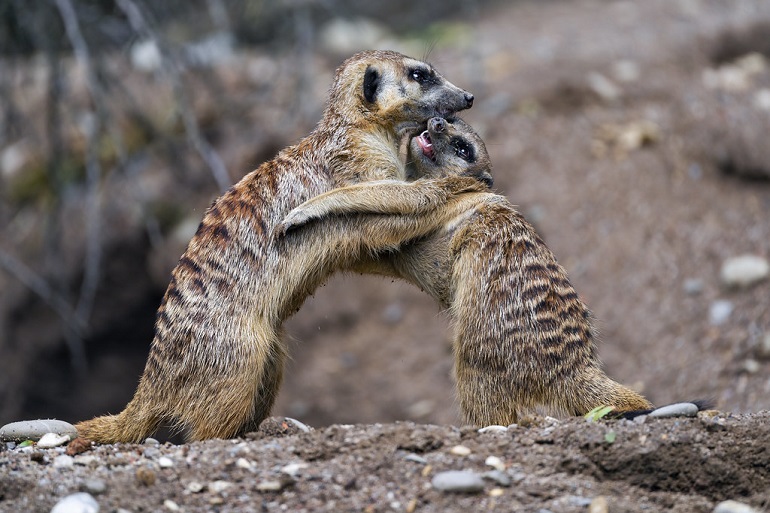
Just as their living arrangements differ, so different species of mongoose use varying hunting skills to secure their chosen prey. They are creative hunters that aren’t afraid of getting their paws dirty. Most are opportunistic and happy to eat anything that comes along, but a few have more specialized diets.
The Marsh mongoose is semi-aquatic and can dive for up to 15 seconds, a trait that enables it to hunt for freshwater crabs, snails, and mussels.
Few mongooses live that way, with most preferring to keep their paws on dry land and focus their attention on less challenging prey, like chicken eggs!
Most species eat the eggs of ground birds, with some using just their front feet to break the egg and others lying on their sides and using all four feet to smash the egg against a rock.
The Impact of Mongoose on the Environment
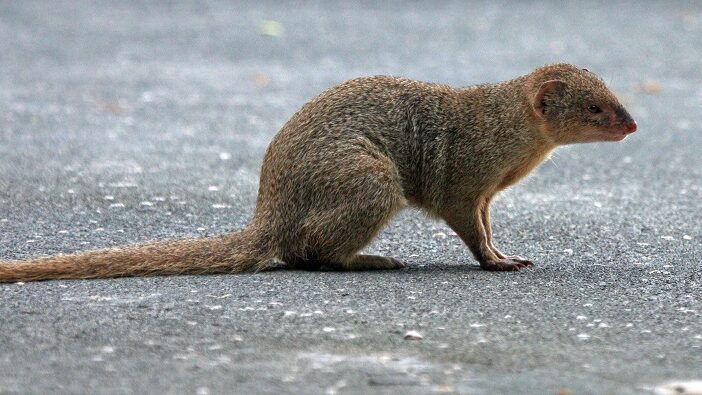
Mongooses play a vital role in their indigenous ecosystems, controlling populations of prey species and providing food for larger predators, like raptors, snakes, and monitor lizards.
Unfortunately, many species are now endangered due to habitat loss.
Where they’ve been introduced into new habitats, however, they’ve proved extremely destructive.
The small Indian mongoose was introduced to Hawaii in 1883 to control the rodents devouring the sugar cane fields. Since then, the population has exploded, putting several endangered bird species at risk.
The Mongoose and Its Cultural Significance
For many people, the most culturally significant mongoose is Rikki-Tikki-Tavi, who saved a boy’s life in Rudyard Kipling’s short story. But the mongoose gained recognition long before Kipling wrote The Jungle Book in 189.
In ancient Mesopotamia, people associated the mongoose with the goddess Ningilin or Ninkilim, “who was invoked in spells to drive away snakes.” The mongoose’s ability to fight off snakes was acknowledged even then!
The Egyptians also considered the mongoose a sacred animal because it was “a manifestation of several deities.” Again, the emphasis is on the mongoose’s hostile relationship with the snake. The Egyptian goddess Mafdet was often represented as a mongoose and was believed to offer protection against snakes and scorpions.
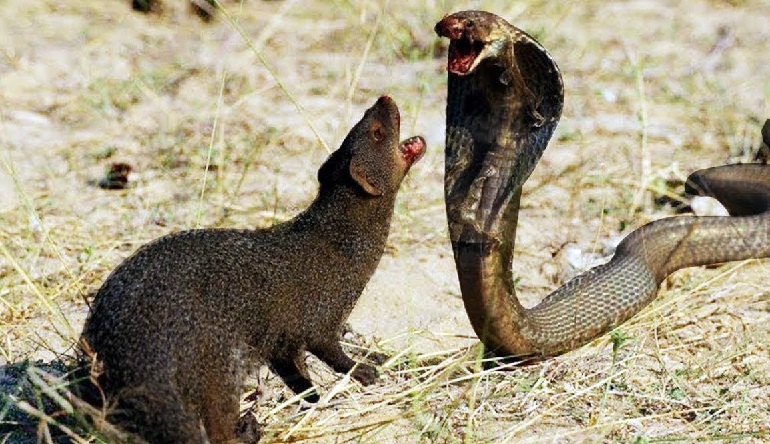
In Indian culture, the mongoose was also noted for its ability to fight off snakes, although the Sanskrit name, Nakula, means “the destroyer (of nocturnal mice).” Despite that, in Indian literature, the mongoose is depicted as a “snake doctor,” capable of using healing plants as an antidote to snake venom.
How Long Do Mongooses Live?
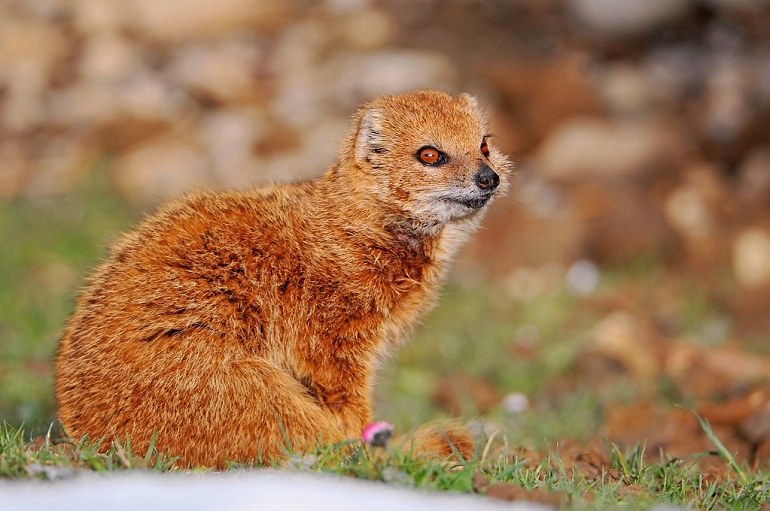
The average life expectancy for a mongoose is around ten years old, although it varies from specie to specie.
In the wild, the Egyptian mongoose can live for up to 12 years, while the Indian gray mongoose only lives to around seven years old.
Mongooses kept in captivity can be expected to live a little longer, with the maximum age being 20 years old!
Here are the average lifespans of some of the most common species of mongoose:
- Common dwarf mongooses – 18 years
- Banded mongooses – 10 years
- Yellow mongoose – 15 years
- Ethiopian dwarf mongoose – 8 years
- Bushy-tailed mongoose – 10 years
- Common slender mongoose – 10 years
- Gambian mongoose – 12 years
- Java mongoose – 18 years
Where Do Mongooses Live?
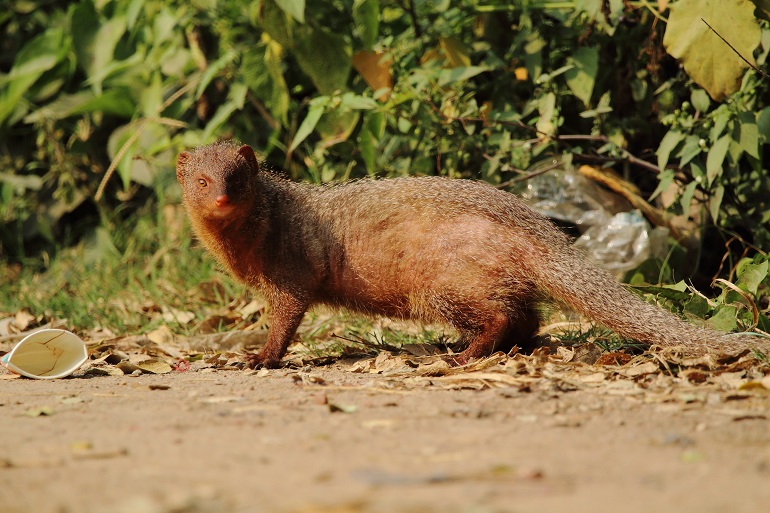
Several species are found in Africa and inhabit a diversity of habitats. For example, bushy-tailed mongooses live in East Africa, while yellow and banded mongooses occur more in Southern Africa.
Some species, like the Egyptian mongoose, live on the Iberian peninsula, while others occupy small ranges in Southern Asia and Southern Europe.
While the Marsh mongoose inhabits freshwater wetlands and estuaries in Sub-Saharan Africa, the Banded mongoose prefers open habitats like grasslands and woodlands.
The Egyptian mongoose is one of the most common species and occurs throughout the coastal regions of the Mediterranean Sea and the savannas and grasslands of Sub-Saharan Africa.
Some mongooses utilize various habitats, with the Slender mongoose moving between semi-arid plains and dense woodland.
Like most species of the mongoose family, the Slender mongoose is an exceptional climber – a talent that enables it to prey on nesting birds and steal their eggs.
Not all Mongooses are as versatile. Malagasy mongooses tend to have a much smaller range, with the Grandidier’s mongoose, or Giant-striped mongoose, restricting itself to the wetland habitat around Lac Tsimanampetsotsa, a saline lake in the southwestern part of Madagascar.
What Do Mongooses Eat?
Just as mongooses utilize different habitats, they also have a wide-ranging diet, although some are more selective than others.
Cape gray mongooses don’t particularly care what they eat, although much of their nutrition comes from small mammals and insects, including grasshoppers and beetles.
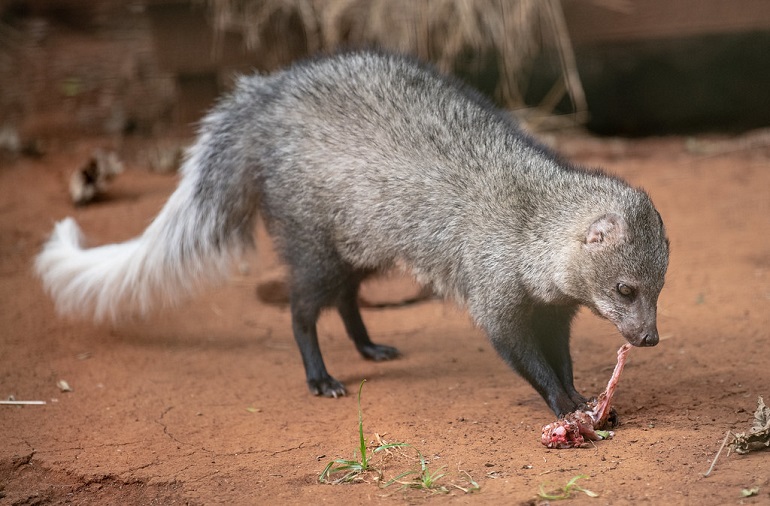
They also share the hyena’s taste for rotting meat and have been observed eating larger animals that they would struggle to kill.
The rotting remains of hares, small antelope, and porcupines are all fair game for the Cape gray, as are birds, fruits, and even human garbage.
The Marsh mongooses are more selective, restricting themselves to a diet of snails, mussels, and freshwater crabs. However, they will consider eating the occasional reptile or insect if their favorite meals aren’t on the menu, and even fruit if the prey is scarce.
The Slender mongoose has an appetite for birds, as does the Indian gray, causing so much trouble in Hawaii. Not only will they steal the eggs of domesticated poultry, but they’ll also kill and eat the birds themselves if the opportunity presents itself.
Certain species of mongooses are opportunistic feeders that change their diets according to prey availability.
A study of the mongooses in Doñana National Park in southern Spain found that they eat mainly rabbits, mice, and small lizards during the wet season but switch to ducks during the dry season when they can access them more easily.
How Do Mongoose Hunt for Prey?
Most mongoose species practice diurnal predation and spend their days foraging among bushes and rocks to find food. However, a few species, like the White-tailed mongoose and Marsh mongooses, are nocturnal and use the cover of darkness to surprise their prey.
Although all species share a similar diet, they use different hunting techniques.
Dwarf mongooses will dig up prey they find underground but are also agile enough to snatch insects out of the air. They bite larger prey species multiple times to gain the upper hand before dispatching them with a dog-like death shake.
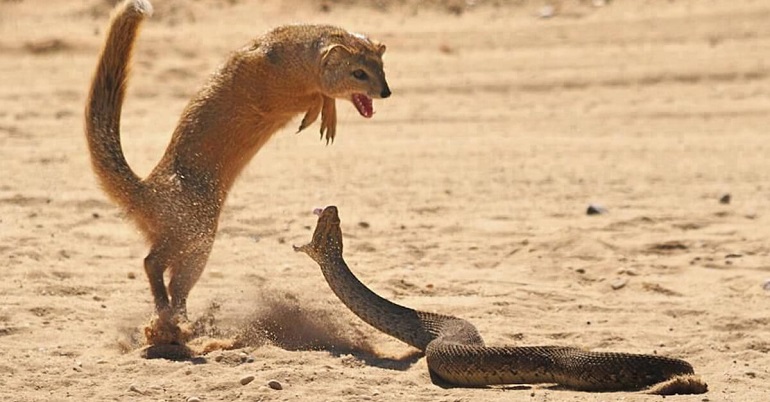
Mongooses are well-known for their ability to fight and kill large venomous snakes like cobras and adders.
They have specialized acetylcholine receptors that make them immune to venomous snake bites. At the same time, their speed and agility enable them to tire the snake out by encouraging it to strike repeatedly. Once exhausted, the mongoose finishes the snake off with a swift bite to the head.
Mongooses also use different techniques to break open bird eggs. Some use only their front feet to smash them against a hard surface, while others use all four.
Studies suggest that these techniques are learned through imitation, and once a strategy has been selected, the individual will stick to it for the rest of their life.
Are Mongooses Endangered?
Although they appear widespread and plentiful in Africa, most mongooses are threatened, if not endangered. The biggest problem facing the world’s mongooses is habitat destruction, with some populations losing their homes to slash-and-burn agricultural practices and others to logging.
According to the IUCN, the Liberian mongoose is vulnerable to extinction as a result of both habitat destruction and hunting. It is heavily hunted for food and easily approached when digging for underground prey.
The Grandidier’s mongoose population is also declining, as is that of the Short-tailed and Collared mongoose families.
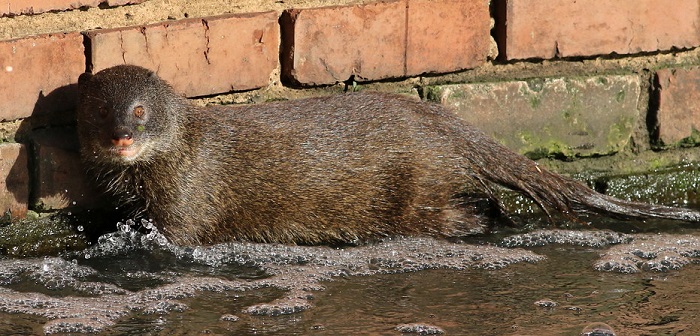
Despite being listed as Least Concern in the IUCN Red List, species like the Marsh mongoose are also declining due to habitat loss and water pollution.
Other species have much smaller populations, like the Selous mongoose, making them more vulnerable to extinction.
There are only 1,000 mature adult Selous mongooses left, and while there are no major threats to the species, they are vulnerable to attacks by domestic dogs and cats and occasionally killed for “perceived predation on poultry.”
Mongoose Populations Around the World
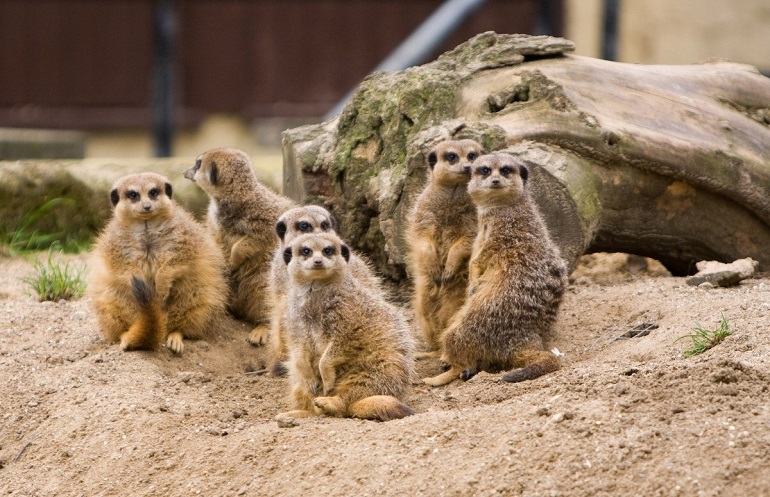
Although most mongoose species are listed as Least Concern by the IUCN, many populations are declining.
The Long-nosed mongoose could be an extinct species as logging and destructive agricultural practices fragment its habitat.
The Black-legged mongoose that calls the forests of the Democratic Republic of Congo may not have anywhere to live if this vegetation continues to disappear at the current rate.
I couldn’t find much information about the exact number of mongooses left in the world, but some of the scarcer species may not have long left.
For many years, the Pousargues mongoose was thought to be extinct until researchers discovered a small population living in the Chinko Project Area in the Central African Republic.
The future of the world’s mongooses is far from stable, and without concentrated conversation efforts, we could see many of our remaining species disappear altogether.
Do Mongooses Endanger Other Species?
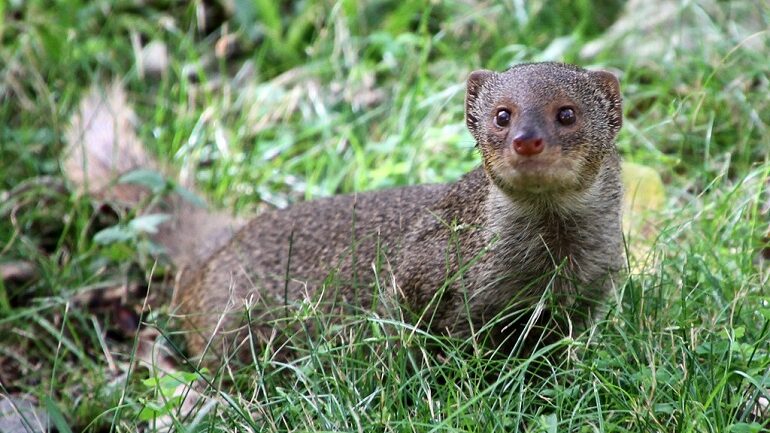
Where mongooses are indigenous, they play a critical part in the ecosystem, controlling populations of insects and small animals while providing food for larger predators.
In places like Hawaii and the West Indies, where mongooses were introduced to control rodent or snake populations, they have become enemies to the native wildlife.
Because there are no natural predators to control the mongoose population, it quickly gets out of control. As the population grows, competition for food and other resources increases, forcing the mongooses to turn to alternative food sources, like ground birds.
In Fiji and Jamaica, the small Indian mongoose is believed to be responsible for the extinction of five endemic ground-nesting bird species, while in Fiji, it’s been blamed for the demise of the Bar-winged Rail.
Incredible Mongoose Facts
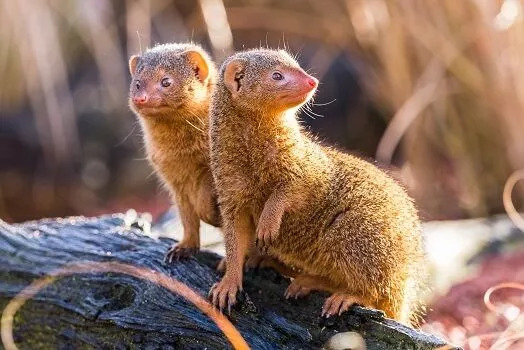
Here are some facts specific to the mongoose species.
Where Do Mongooses Live?
Most mongooses live underground in a complex network of burrows. These can be in tropical forests, semi-aquatic environments, or open grasslands.
Some species dig these burrows themselves, while others take over already-established ones.
How Do Mongooses Communicate?
Mongooses primarily use vocalizations and scent marking to communicate, although body language also plays a role in large groups.
Body language is perhaps the most important communication form among mongooses, as it can convey a wide range of information. A mongoose may use its body to signal submission to another mongoose or intimidate an opponent.
A study of the small Indian mongoose conducted in 1974 identified 12 different vocalizations, including honks, growls, and squeaks. Mongooses use these to convey a range of emotions and establish dominance and arousal.
Nearly all mongooses use scent to mark territory and deter potential intruders from entering. It’s also thought that some species use them to communicate reproductive status and as a warning to their potential rivals.
Mongooses are no more poisonous than a domesticated dog or cat, but because they can tolerate a certain amount of snake venom, they have often been perceived as venomous themselves.
Do Mongooses Make Good Pets?
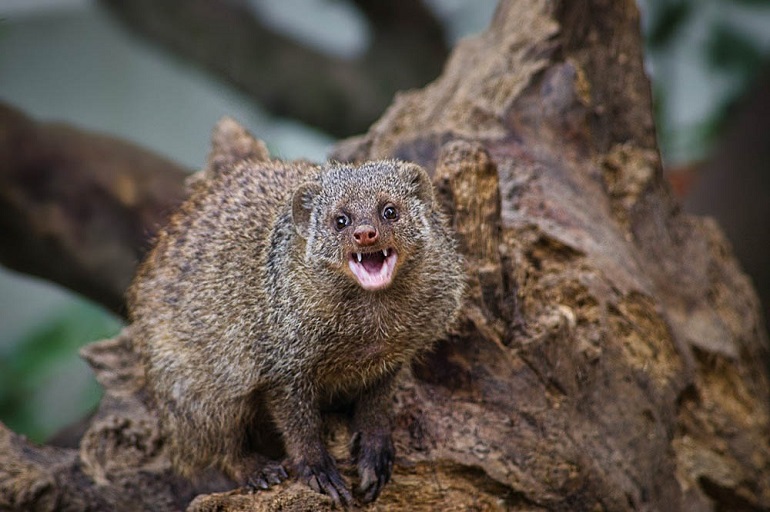
Keeping a wild animal as a pet is always a risky business, and it’s no different with a mongoose. They are wild animals, and although you may be able to tame and train certain individuals, they’ll always retain some of their instinctive behavior.
While they’d be great at keeping your home free of snakes and other pests, they’d also be useful around small animals like guinea pigs or gerbils. That hunting instinct isn’t easily erased!
Although some species of mongoose are banned in the US, there are others that you could legally own. However, it varies from state to state, so you’d have to do some research first.
Another concern about having a mongoose in your home is that they produce an unpleasant odor to deter potential predators. As if that isn’t bad enough, they’re also extremely active, excellent climbers, and liable to turn your home into a jungle gym!
Conclusion
Mongooses have adapted to almost every ecosystem on Earth, living in semi-arid environments just as easily as they do in wetlands.
They are tenacious creatures capable of taking on venomous snakes and creative hunters that use their speed and agility to overpower their prey.
While some mongooses are predominantly solitary, others live in large families or mobs, sometimes numbering as many as 50 individuals.
Despite the mongoose’s ability to adapt and survive in many different ecosystems, many populations are declining due to habitat loss. Some, like the Liberian mongoose, are close to extinction.
While mongooses play a critical role in the ecosystem, attempts to introduce them to new areas have proved disastrous. With no natural predators, mongooses reproduce at an alarming rate, endangering other species as their population grows.
Mongooses are fascinating animals that belong in the wild, not in cages or Hawaii sugar cane fields. Let’s just hope we can protect their habitat long enough to ensure their survival.












